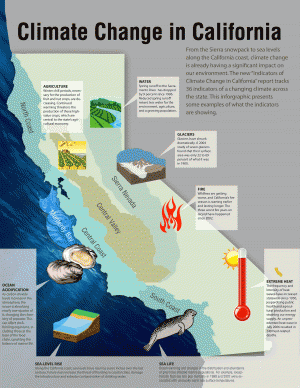
Be it torrential rains or severe droughts, huge wildfires or rising sea-levels, every corner of the United States has been -- and will continue to be -- impacted by the effects of human-induced climate change.
That's the scenario presented last week by a team of scientists who described a series of sweeping environmental changes of near biblical proportions.
The government report, known as the National Climate Assessment, notes that many of these changes have resulted from an average temperature increase of less than 2 degrees Fahrenheit over the last century. It warns that U.S. temperatures could increase by more than 10 degrees by the end of this century if carbon dioxide and other greenhouse gas emissions continue to increase.
Prepared by a large team of scientists, the White House released the study in an effort to create a greater sense urgency among Americans and build support for new climate change regulation that President Obama plans to introduce in June. An April Gallup poll found one in four Americans is still skeptical about the effects of climate change and thinks the seriousness of the issue has been exaggerated by the news media.
The report also describes the significantly varying impacts of climate change across the country, from torrential rains and coastal flooding in the Northeast, to severe droughts and intensifying wildfires in the West.